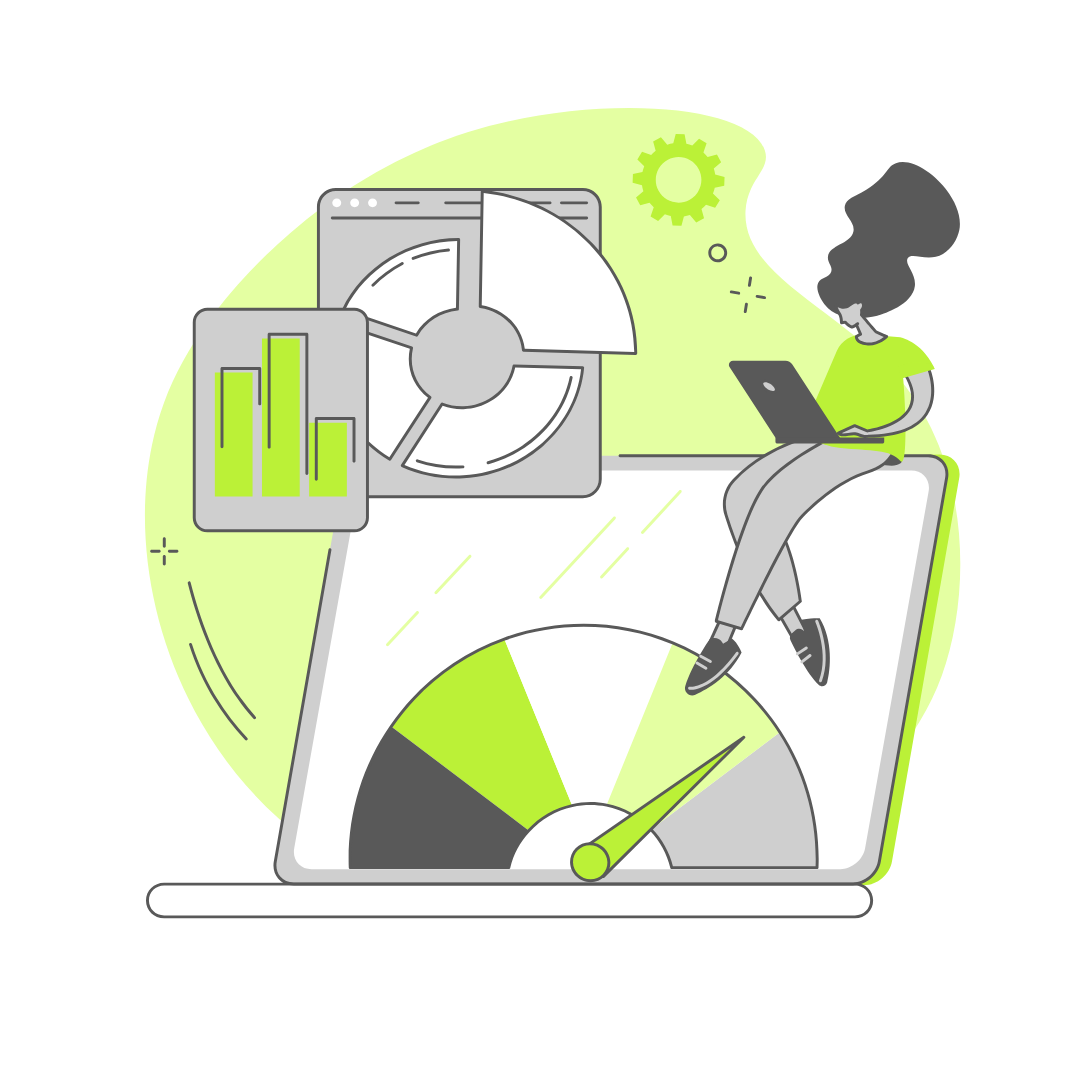B2B SaaS Growth Strategy: Top Tactics for 2025
This blog post is part of our SaaS Marketing Strategy series.
Let’s cut to the chase - the competition for SaaS is fierce.
But, with 96% of companies using at least one SaaS product, and 72% planning to invest more in SaaS, there is plenty of opportunity out there.
You just have to know how to get after it. And that starts with a B2B SaaS growth marketing strategy.
Scaling a B2B SaaS company requires more than just acquiring new customers. It involves a balance of customer acquisition, retention, and expansion strategies to create a sustainable growth model.
In a competitive market filled with complex sales cycles, long-term growth is only achievable with a focused and strategic approach.
This guide covers essential components of a successful B2B SaaS growth strategy that can drive consistent results.
The Unique Challenges of B2B SaaS Growth
In the world of B2B SaaS, growth isn’t just about selling a subscription—it’s about proving continuous value.
According to GrowthMentor, scaling in this space means tackling challenges like:
high competition
longer decision cycles
a need for constant customer engagement.
SaaS companies must invest in both acquisition and retention, ensuring that every new customer is a long-term user, not just a one-time conversion.
The Four Core Components of a Successful B2B SaaS Growth Strategy
1. Targeted B2B SaaS Growth Marketing
B2B SaaS growth marketing is a targeted approach focused on reaching decision-makers and nurturing them through the buying process.
In a crowded SaaS landscape, standing out requires effective use of content, ads, and relationship-building efforts.
Content Marketing
Educational content like blog posts, whitepapers, and case studies builds authority and attracts high-quality leads. Creating thoughtful content that answers common questions and addresses pain points helps drive potential clients toward conversion.
Targeted Advertising
Paid ads on platforms like Google and LinkedIn are effective in reaching B2B audiences. When you target high-intent keywords, these ads can capture decision-makers actively searching for solutions, making it a critical component of any B2B SaaS growth strategy.
Retention Marketing
Retention-focused efforts, such as personalized email campaigns and exclusive offers, keep existing clients engaged, reduce churn, and enhance the lifetime value (LTV) of each customer.
2. Leveraging Product-Led Growth (PLG)
A SaaS growth strategy rooted in Product-Led Growth (PLG) allows the product to serve as the primary driver of acquisition and conversion. This model is increasingly popular in SaaS because it enables users to experience the product’s value before they commit.
As Paddle explains, product-led growth makes it easier for users to see firsthand how the software addresses their needs.
Freemium Models and Free Trials: Many SaaS companies offer a free tier or a trial period. This approach lowers the barrier to entry and allows potential customers to experience the value of the product without risk.
Guided Onboarding: Effective onboarding ensures that users quickly see the benefits of the product. Highlighting key features and providing support along the way can improve retention and satisfaction.
User Engagement Tracking: By analyzing user behavior, SaaS companies can identify the most valuable features, guide users toward them, and improve the overall user experience.
3. A Comprehensive SaaS Strategy for Customer Retention and Expansion
A holistic SaaS strategy isn’t solely focused on acquiring customers—it also emphasizes retention and expansion. Maintaining long-term relationships and increasing revenue from existing customers are crucial for growth in B2B SaaS.
Customer Success Teams: Dedicated customer success teams help users realize ongoing value. They proactively reach out to customers to address concerns, resolve issues, and make sure they are getting the most from the product.
Regular Product Updates: Consistent improvements based on user feedback keep the product relevant and valuable. Regular updates show customers that the product is evolving to meet their needs.
Expansion Revenue: Upselling and cross-selling additional features or premium plans to existing customers can drive significant growth. This strategy, highlighted by Paddle, is often more cost-effective than acquiring new customers.
4. Tracking Key Metrics for Growth Optimization
To evaluate the effectiveness of a B2B SaaS growth strategy, it’s essential to track key performance metrics. These metrics provide insights into both strengths and areas for improvement.
Customer Acquisition Cost (CAC): CAC is a critical metric that measures the cost of acquiring a new customer. Keeping CAC in check is essential for profitability.
Lifetime Value (LTV): LTV reflects the total revenue generated by a customer over their relationship with the business. Increasing LTV by improving retention and customer satisfaction is a key goal for any SaaS company.
Churn Rate: Monitoring churn helps identify patterns and develop strategies to improve retention. A lower churn rate indicates successful customer engagement and satisfaction.
Monthly Recurring Revenue (MRR): MRR tracks consistent revenue growth and helps SaaS companies measure financial stability.
Practical Tips for Implementing Your B2B SaaS Growth Strategy
Automate Customer Engagement - Right Message, Right Time
Marketing automation makes lead nurturing and follow-ups seamless. By automating customer engagement, you can send targeted messages without manual effort.
Automated emails, triggered sequences, and chatbots help you stay connected with customers at every step.
When users engage with your product—like signing up for a demo or completing an onboarding task—automated workflows ensure they get relevant content right away. This keeps prospects moving forward and strengthens your brand’s relationship with them.
Marketing automation helps you stay timely, consistent, and top-of-mind, driving engagement and conversion at every stage of the funnel.
Invest in User Experience (UX)
User experience is a huge factor in customer satisfaction. A smooth, intuitive UX helps new customers understand your product and see value right away.
Elements like easy onboarding, clear navigation, and quick access to support are critical. They reduce friction, making users feel confident in your product from the start.
By prioritizing UX, you improve customer retention and increase loyalty. Continuous adjustments based on user data keep your experience polished and user-friendly. Great UX keeps users coming back and sharing positive feedback.
Gather Customer Feedback
Listening to customers is key to building a product they love. Collect feedback through surveys, interviews, and in-app prompts to understand their needs.
Acting on this feedback shows users you value their input. It builds trust and loyalty, making customers feel involved in your product’s development.
Use this data to shape your product roadmap, prioritizing updates that align with real customer demand.
A customer-focused approach makes your SaaS solution more competitive, creating a loyal base that sees your brand as responsive and reliable.
Outsource Growth Marketing Efforts
Achieving high-impact growth requires both strategic focus and specialized skills—two things that an in-house team may struggle to balance, especially at scale.
That’s why 56% of SaaS businesses use a combination of in-house and outsourced marketing.
By choosing to outsource growth marketing efforts, you avoid overloading your in-house talent, allowing them to focus on core strengths and initiatives while gaining access to external expertise.
Outsourcing specific functions like paid social media, content creation, SEO, and lead generation allows your business to stay agile and responsive to market shifts without stretching internal resources too thin.
This not only brings in fresh perspectives but also keeps your strategies scalable, cost-effective, and aligned with your growth trajectory.
Wrapping Up
A strong B2B SaaS growth strategy integrates marketing, product-led growth, customer success, and data-driven decision-making to create scalable success. By focusing on targeted acquisition efforts, retaining customers through exceptional support, and continuously improving the product, B2B SaaS companies can achieve sustainable growth.
For a more detailed exploration of strategies that work in today’s SaaS market, check out our in-depth SaaS Marketing Strategy Guide.
Ready to build a tailored B2B SaaS growth plan that drives real results? Contact UPBEAT today to start building a strategy that aligns with your business goals.



